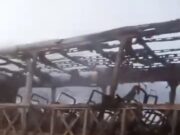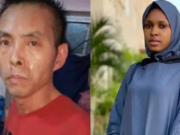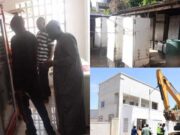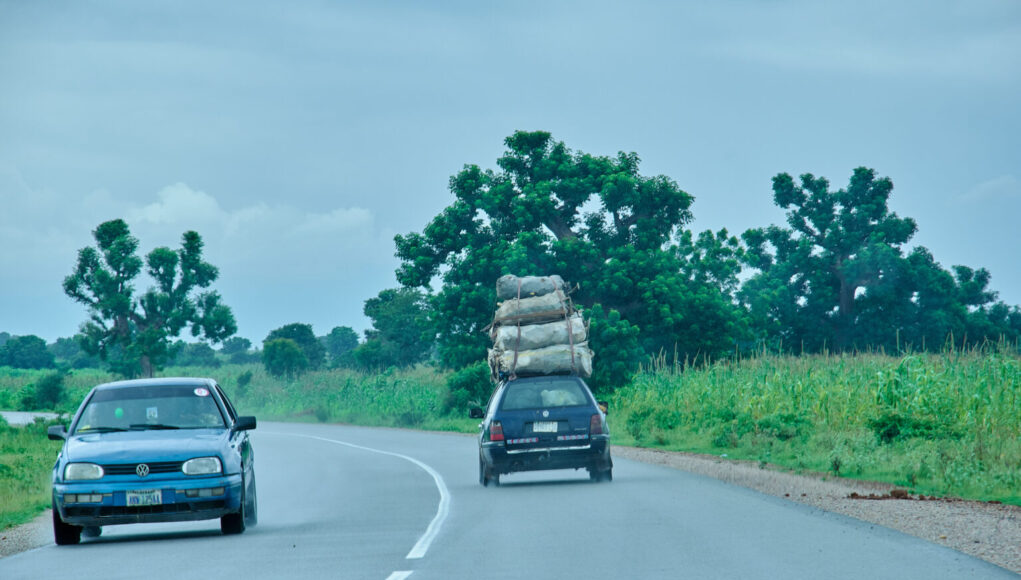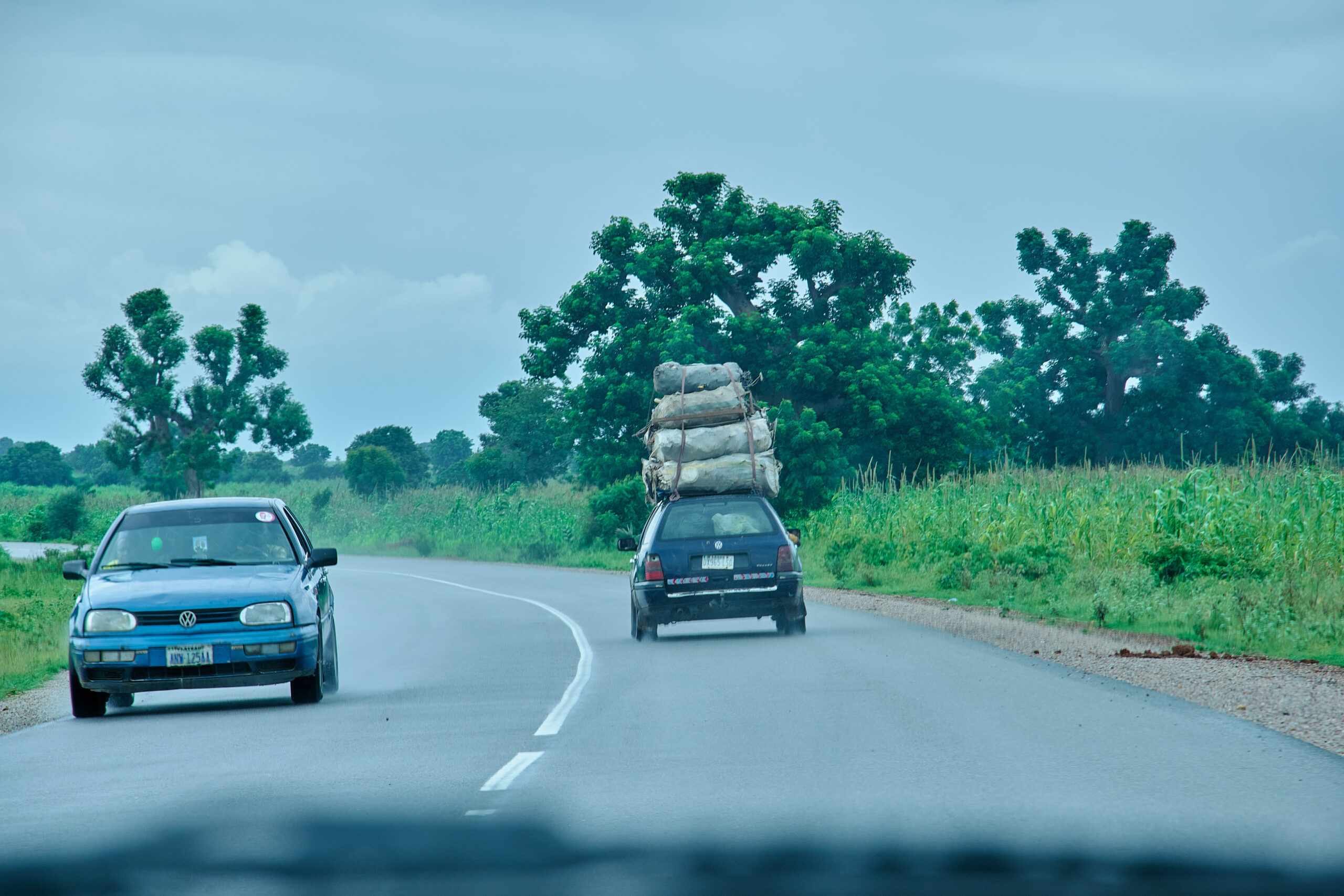
Arriving in Gusau in August 2022, my pounding heart stopped abruptly in fear. I was now in the ancient Zamfara town of the North-west region where rural banditry sprang from. It was here the tit-for-tat violence broke out over a decade ago before it degenerated into a full display of terror.
In the heart of this bustling town, Buhari Moriki, an indigene of the area, documents the rural war consuming his state. A few minutes after I disembarked from a public vehicle at the Gusau central park, he drove in a black Benz to pick me up. He would be my guide for the rest of the weeks I would stay in the state.
Like a prophesying man of God, he knew the best times to navigate the dangerous roads of this state to bypass the bloodsucking terrorists; he knew whom to contact to determine if it was safe to travel to certain communities and he knew when to tap me on the shoulder to signal that he had smelt danger.
“I am born and bred here and I know much about these banditry issues,” he said in a manner that suggested confidence. “We’ll have no problem in this journey Insha Allah (by the grace of God).”
Contents
The costume of an investigative reporting
Before embarking on the risky journey to uncover the Nigerian bandits’ new financing dynamics, I had profiled the people and places I was going to investigate for months. The intelligence I gathered intensified my belief that sometimes a journalist is an artiste who wears a costume to suit his role in a play.
I had been reliably informed that my biggest enemies on this journey were not even the terrorists but some unscrupulous citizens making a living from being informants to armed groups. Their ears were always on the walls; they could notice me upon arrival and quickly inform the terrorists about the presence of “a stranger sniffing around with cameras”.

Could I have announced myself as a journalist in this sojourn?
No chance!
Since 2020, I had wanted to tell this story but finance failed me. Therefore, when I was finally commissioned to do the story, I first went to Kasuan Daji, a big market in Sokoto, to purchase some Hausa-Fulani clothes that I would wear for the next two months. The idea was to appear like an ordinary citizen, wearing a kaftan and bathroom slippers or dress like an average Hausa man, donning a cap and a jalebi attire, before setting out every day. With Mr Moriki’s assistance, this strategy worked like magic as I navigated towns and villages under the control of the terror groups.
Terror in the land
As we trod through the road networks in Gusau, I was stunned by the serenity around; it didn’t look like we were any close to a troubled state. But just the previous night, I had received a call from Meimuna Abdullahi, my long-time friend, who told me how armed and menacing bandits had terrorised them in the Merere area of Gusau — a few metres from the hotel I had lodged.
At 11 a.m. on 7 August, I arrived in the Zurmi area of Zamfara, staying temporarily with a community chief who offered to accommodate us pro bono. From there we navigated through the town’s most remote villages headlined by chilling tales of terror. Here, I would meet villagers who had interfaced directly with terrorists or who have been victims of their mayhem.

One thing that still bothers me even as I write is how locals in this place were comfortable cohabiting with terrorists. In broad daylight, I saw arm-wielding boys pulling up on motorcycles and moving freely. I had thought they were members of self-defence vigilante groups, but I was proved wrong when residents told me they were armed bandits. The terrorists pray in the same mosques with the people and share the same market spaces with them. In fact, I was told, one’s neighbour next door might just be a killer-terrorist.
“This place is relatively peaceful because this is Zurmi town,” said the village chief, whose name I would not mention here for security reasons. “But if you move just 1 kilometre away from here, you’re no longer on your own, you’re for them.”
‘Help! Maggots in my leg’
Throughout my stay in Zurmi, I interacted with several stranded displaced persons looking to get a better livelihood in the town. So many of them wanted to go back home but they dared not. I saw wandering men seeking help to put food on their tables. One hot afternoon, I saw some women picking rotten grains to feed themselves in another instance.
One of the displaced persons, Sani Muhammad, spoke to me through my guide-cum-interpreter. Trudging around with a prop, his injured leg, patronised by flies as big as honeybees, easily got my attention. Worried about his condition, I approached him to tell me his story.

Eleven months ago, his village was attacked in the Khawashe community of the Zurmi area. Bandits had asked them to pay a million naira as tax but they failed to comply. The consequence of their lack of compliance was a midnight raid on their community. As he tried to escape the invasion, a pellet of bullet hit him in the leg. He fell and rose up again, running through the forest of the community.
“My injury got complicated while running in the bush,” he recalled. “They have stitched my body, you can see my bones.”
But then, the man said he was worried his leg might be amputated. The wound got messier every day so much that maggots had penetrated his ailing leg.
“I don’t have money to treat this wound,” he said, teary-eyed. “Please help, there are maggots in my leg.”
‘We want them to kill you’
How many times have we read on the pages of newspapers that state officials were abetting armed bandits in Zamfara to kill and maim innocent citizens? Hard as it is to believe though, I found the name of a state official nearly on the lips of every individual I interviewed here in Zurmi for the wrong reasons.
The villagers got easily angry when they were asked what government intervention they had got so far. Many of them wondered if government exists in the state. “Don’t even talk about the government; there’s nothing they can do for us,” one of the villagers told me. “We used to complain to the emir in the past but we now depend only on Allah.”
Abubakar Muhammad, the security adviser to the Zamfara government, is the reason many of these civilians said they no longer believe in the state’s authorities. He had been accused of working for the terrorists against the people on several occasions. He was also accused of being a mediator who reckoned with the marauders to negotiate ransoms on behalf of kidnap victims. I, however, found no evidence of his involvement.
Earlier this year, one resident, a local chief, who does not want to be described by name, found himself helplessly in need of a state official’s intervention when ravaging terrorists targeted villagers from the Dada community. The residents said they would like to fight back but the community monarch warned them to remain peaceful.
One afternoon in April, the terrorists invaded the community again and killed about 20 people. The chief said he picked up his phone and contacted the Zamfara security adviser to inform him that the terrorists were killing people in his village.

“I was with five dead bodies, including my younger brother, as I spoke to him and sought his intervention,” he recalled, noting that he was disappointed by the response he got from him. “He said that was very good for us since we would not listen to him. He said, ‘we want them to kill you so that your population can be reduced.”
The villagers said state officials had warned them not to default in paying taxes to the terrorists. The local chief said they stopped calling the government official for any intervention in the community because he lacked a sense of sympathy.
Since this allegation was made against his person in August, I have contacted Mr Muhammad on several occasions. But he would neither respond to messages nor call back to tell his own side of the story.
One bandit owns 400 acres of bean farmland
Each day I traversed through the interior villages of this state, I picked sad tales of armed banditry plaguing Zamfara from civilian families torn apart by the terror groups. From Zurmi to Kaura, Shinkafi and Birnin Magaji, I combed the length and breadth of this state, my initial idea was to document how payment of taxes to non-state actors by helpless communities sustains terrorists in the northwest region. But what I saw was far beyond this.
I met a 70-year-old community chief in Birnin Magaji slaving on the farm fields of terrorists and supervised with guns and rods by “teenage bandits young enough to be my grandchildren”. I met men who told me their wives no longer belong to them alone; they now share their wives with armed and invading terrorists. And I saw children whose parents were scared that they could be recruited by the menacing militants. Unprotected citizens in this state are now governed by bandits-cum-terrorists who subject them to 21st-century slavery.
One thing that keeps reoccurring to me is the huge investment of terrorists in illicit farming. In the Jeja community of this state, for example, a terrorist, Mai Solar, had cultivated hundreds of bags of beans on over 400 acres of land, forcing people from 30 villages in the area to work on the farm. His beans farm field is worth billions, several farmers I contacted in Zamfara, said.

In these hard-to-reach areas in Zamfara, only God is the saviour, residents said. “Sometimes, a bandit can ask your wife to drop the baby on her back and follow him on his motorcycle and there is nothing you can do. When he is done, he brings her back,” a local said, corroborating stories I had gathered in the Birnin Magaji area of the state.
“You dare not find your daughter a spouse without the consent of the bandits,” another local added. “If these boys show interest in her, the bandits pay the dowry and officiate the marriage and there is nothing you can do.”
Saving up heavily to pay taxes to terrorists
Have you read the story of Faskari, a community in Katsina saving up to pay ransoms to armed bandits? When I learned about a similar story here in Sokoto, a state neighbouring Zamfara, I vowed to locate the community to tell the story of the people.
In October 2021, terror kingpin Bello Turji ordered villages in the Sabon Birni area of Sokoto east to pay N70 million in exchange for peace. When the levy was imposed, locals in the affected communities said they had sleepless nights raising the funds to avoid another gruesome attack.
Despite paying millions to the Turji’s criminal gang, the victims were scared the ceasefire was temporary. But community leaders in Dan Adua, one of the 42 communities forced to pay the protection levy, had an idea: they would save up ahead to meet up with the future demand of the terror group.
The community had been earmarked to pay N1.5 million as demanded by the terrorists in a memo. “Each family head in the community was asked to pay N3,000 to meet up with the terrorists’ demand,” said Lukman Iliyasu, a youth leader in Dan Adua. “And unmarried people were asked to pay N1000 each.”
Mr Iliyasu was entrusted to raise funds from indigenes of the community living in Sokoto city. After going door to door for weeks, he gathered the sum of N200,000 from his kinsmen in the state. By the time he would deliver the money, the community head, Salau Maigari, had gathered up to one million Naira and advised that they persuaded the bandits with what they had gotten.
![Danbakkwalo left with Bello Turji -- both notorious terrorists ruling in Sabon Birni. [PHOTO CREDIT: Abdulaziz Abdulaziz]](https://media.premiumtimesng.com/wp-content/files/2022/11/PIC-7-Danbakkwalo-left-with-Bello-Turji-both-notorious-terrorists-ruling-in-Sabon-Birni.jpeg)
The youth leader advised that the N200,000 left should not be returned to the people. It should be saved ahead of future demands from the terrorists, he said. But how? “I told them to buy cash crops with the money,” he recalled, “so that by the time the bandits will come to ask for money or ransom, the cash crops prices would have yielded in the market and we would sell them.”
In truth, a few months later, some teenage bandits invaded the community one sleepy evening in July 2022, to kidnap six villagers on their farms. They would later ask the villagers to pay a ransom of one million Naira to secure the freedom of their people. Instantly, Mr Wakili said, they sold off the cash crops they had kept in their farm store for N300,000 and rallied around the community again to beg for funds.
“We were able to gather N400,000 from the people; we added it with N300,000 and begged the bandits to take it from us,” he said. “They then released our brothers to us.”
Dying before death
Monday, 22 August 2022, was the day I wondered if I overstretched my luck. Having read the story of the community chief deposed by armed bandits in the Gangara town of Sabon Birnin, I vowed I would not return home unless I track him down for an interview. I had been misled by people who said they last saw him in certain locations in Sokoto east. I had travelled to Birni Konni in the Niger Republic when I learned he had relocated to the place after terrorists unseated him. These were all wrong intel.
But my guide came one day with some great news: “I know where we can find the community chief removed by terrorists.” In spite of my past experience, I believed him because he had not told me anything, throughout our togetherness, that I found to be untrue. But there was a hindrance.
“Sabon Birnin is boiling,” Mr Moriki said; it was the first time he was stuttering talking to me. “The people I contacted said we should not travel to that place unless it is a matter of life and death.”
We departed that evening worried and wondering if we were ready to take the risk. The following morning, my guide appeared at the door of my hotel room, saying it was time for the journey. Breathing with the oxygen of his guts, we moved. One doesn’t jump into a deep sea and begin to complain of cold, I thought.
Travelling from Gusau to Shinkafi was itch-free but moving from the latter town to Isa town, in Sokoto, was a gruelling experience. We had waited for hours to get a commercial vehicle that would convey us to Isa only for it to develop faults several times on the bumpy, dangerous roads of the armed bandits’ stronghold. Around 2 p.m., we arrived in Sabon Birnin to interact with the village chief and residents of the area. It was the third time I would come to this town for this story.

Seeing the community head, Usman Aliyu, nearly a year after he was deposed was exciting. We spent enough time with him to understand his plights and pains. I documented his story here. At 4:50 p.m., the cloud was beginning to darken, meaning horror was lurking. Mr Usman warned we needed to be on our way at the moment; we obliged and headed back to Isa town where we would board a vehicle to Shinkafi.
Before he mounted the stirring of his vehicle, the driver asked all passengers to drop their valuables with him at a park in Isa town. If we stayed longer at the junction, the driver said, we would be caught up by the bandits. He was familiar with the route and he hinted we were just a step ahead of the plagues of the ravaging terrorists. As he drove on the road network to Shinkafi, amid a cluster of huts, we saw traces of ruins left by the terrorists. Most of the villages were slumbering and quiet; no sign of human activities.
‘Even if I kill a human being here I can’t stop’
About 40 minutes into the journey, the driver ran into a fowl, killing it. Wearing a sorry, pitiful face, my guide begged that we stopped at the village to apologise to the owner of the fowl. Disdainfully, the driver looked wondering who had just spoken.
“Even if I kill a human being here I can’t stop,” he said in his local Hausa language that lacked pity. “Here is a very dangerous terrorists’ coven; any attempt to stop means we are in trouble.”
Soon, my guide’s phone rang; the Gangara community chief was calling but he would not answer, heeding the driver’s no-phone-call order. In another 50 minutes or so, we arrived at Shinkafi where the night had enveloped the day’s light beam. It was too late to continue the journey to Gusau. We spent the night in one local, cheap guest house, where mosquitoes had eventful feasts on our innocent skins.

As the cock crowed the following morning, the district head’s phone call woke us up. He wanted to be sure we were still alive. A few minutes after we left Isa town, the armed bandits went on the rampage, killing two passengers in a commercial vehicle that was in the queue behind the car we boarded at Isa park. When he dropped the call, my eyes locked with my guide’s, each of us wondering what could have happened to us the previous day. As we proceeded to Gusau where I connected to Sokoto to find my way home, I tried to check the media space if the killing that occurred in the Sabon Birnin area was reported, but I found nothing related.
Had a soothsayer told me I would have to travel to Lagos by road, from Sokoto, I wouldn’t have believed it. I had booked a flight out of the state but it was cancelled two times for “operational reasons”. When I realised I had no other choice, I embarked on a 1000-kilometre journey to Lagos via a public bus. At a time Nigerians were debating on choosing between paying heavily for skyrocketed flight tickets or paying millions as ransom, I joined other 14 passengers to travel through the deadly, torturous road networks of Sokoto, Kebbi, and Niger — three states notorious for terrorism incidents — before finding myself in the southwest states and finally Lagos.
How did we get to this ugly stage?
Nearly all the journalists that have investigated Nigeria’s banditry in the North-west have revealed its roots in ethnic violence fuelled by the government’s mismanagement and lack of political will. I, however, reported that these bandits have now moved from fighting battles over ethnicity to merchandising terrorism — not only by kidnapping for ransom but also by imposing taxes on communities and monopolising farming and engaging civilians in forced labour.
While I was on the field for this story, The Bandits Warlords of Zamfara, a documentary by Yusuf Anka, a journalist and son of the soil, revealed how the tit-for-tat violence has ruined the state. His reporting, based on interactions with terror warlords, showed that different bandit groups have different motivations for wielding arms. But the general attraction point is its business angle — the commercialisation of terror by converting ungoverned spaces to multi-billion revenue generation ventures.
In an interview with arguably the most notorious bandit in Zamfara, Abdulaziz Abdulaziz, a Nigerian investigative journalist, asked Bello Turji why he is forcing communities to pay taxes in addition to his kidnap-for-ransom business.
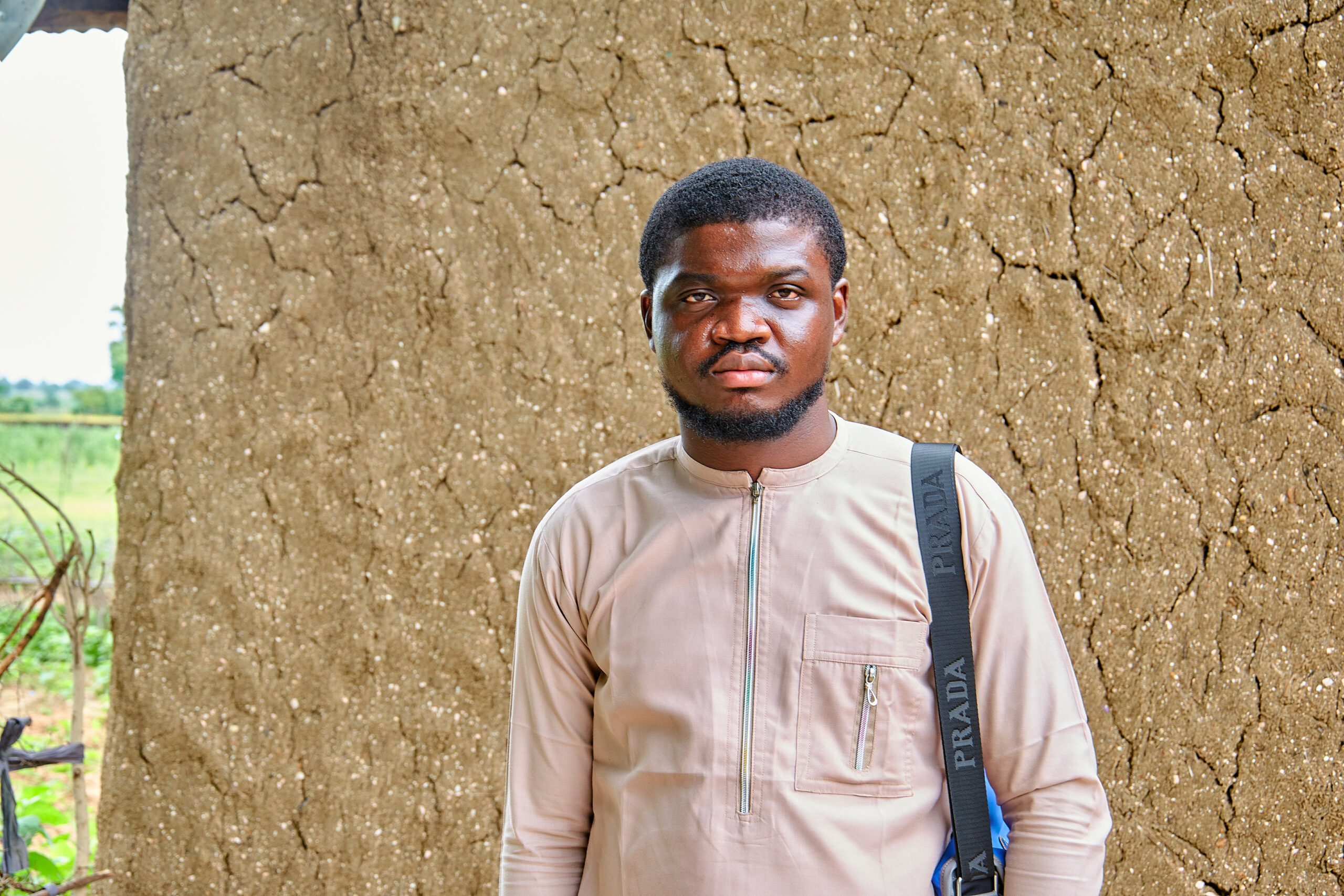
He said: “Some of our people get intercepted while travelling by vigilantes or corrupt policemen. They place a heavy levy on them that they must pay. For that, I must also impose a tax on other people.”
This cash-for-peace policy is intensifying terrorism financing in the northwest and central states. Yet, authorities unable to defend these terrorised states have charged citizens to pick up weapons to protect themselves against the terrorists. But experts warned that the self-defence admonition would fuel a booming business of muskets made from scrap metal. And, in truth, procuring a locally made gun costs just N3,500 in Sokoto, according to a report by HumAngle.
One question that keeps coming to mind anytime I remember my experience on the field for this story is: how did we get to this ugly stage?











